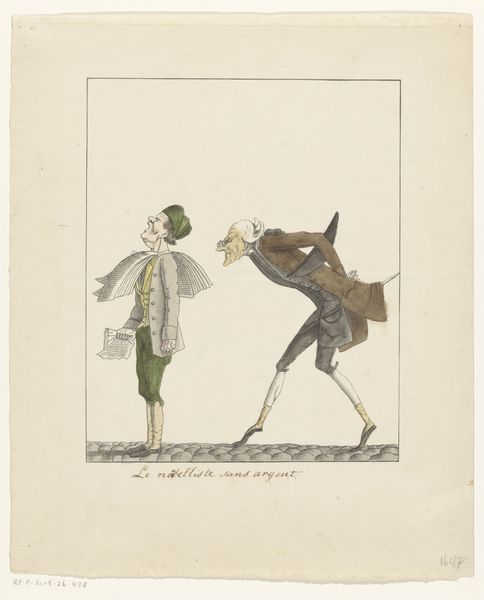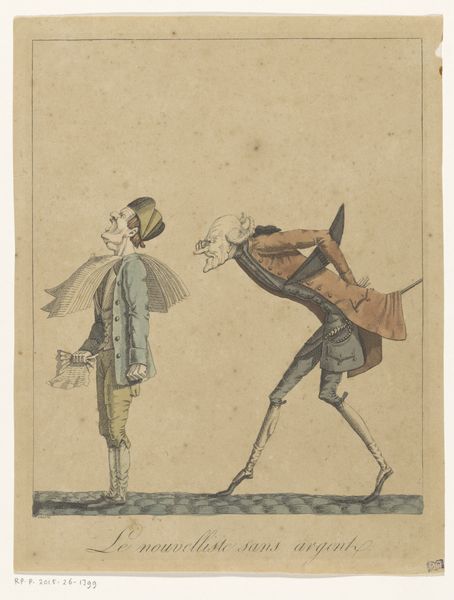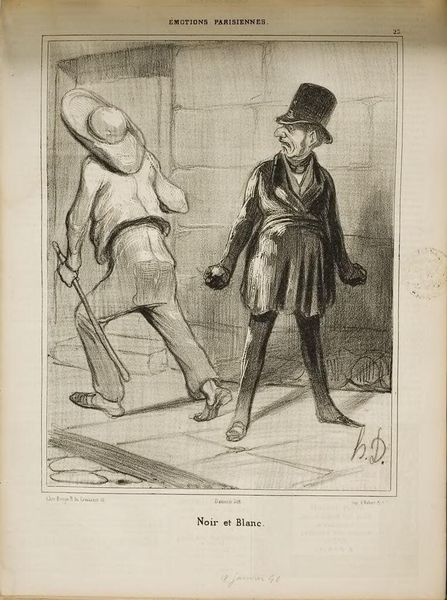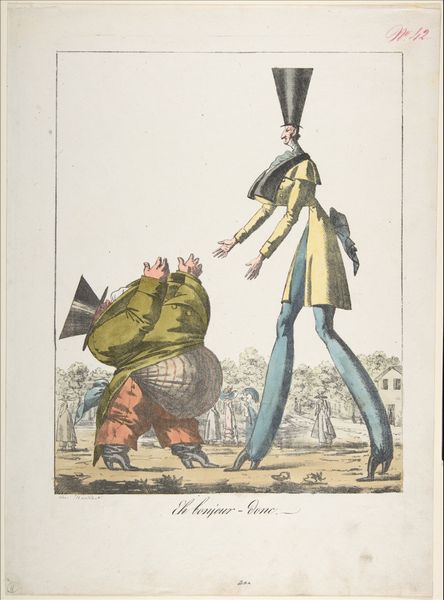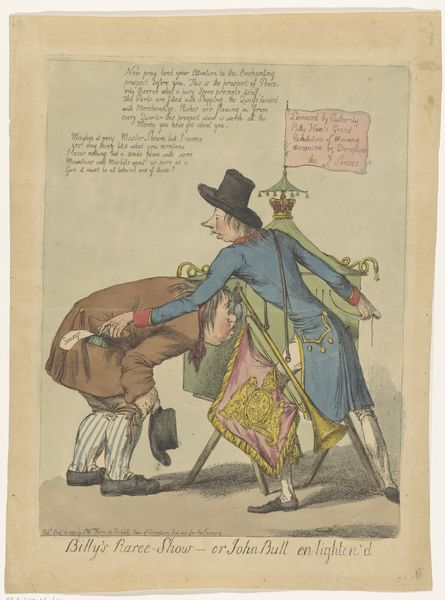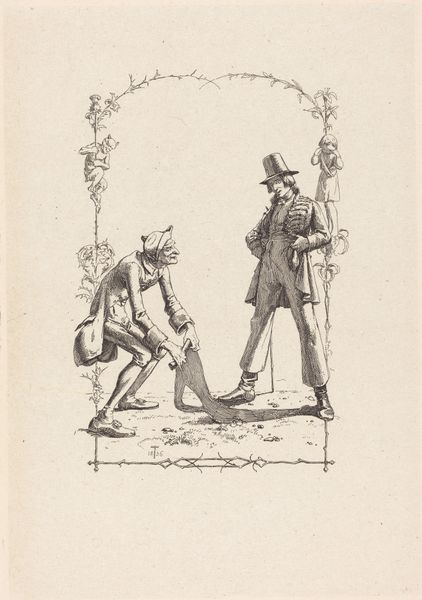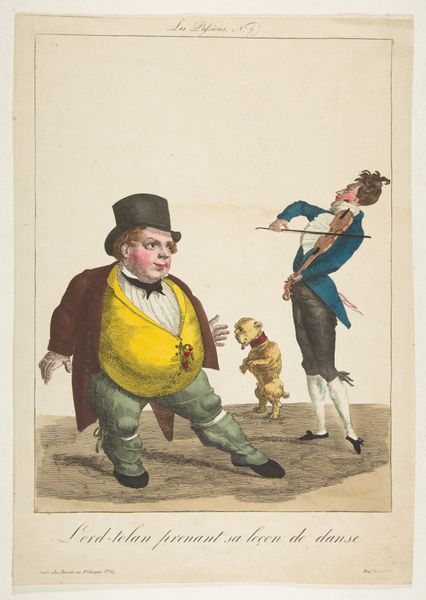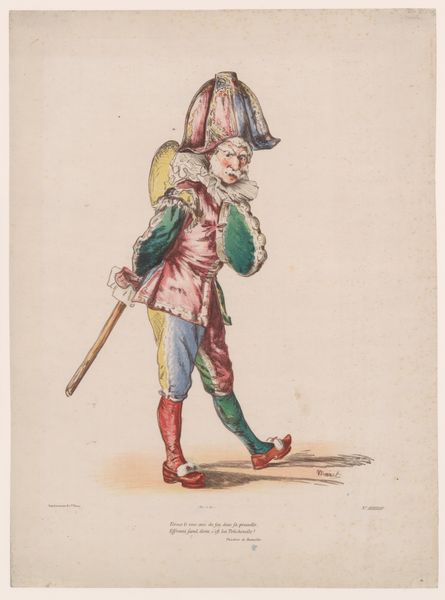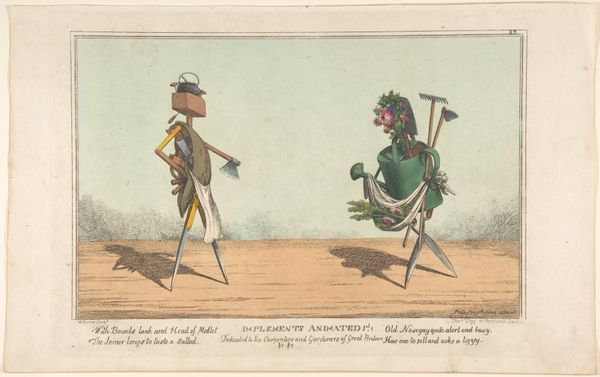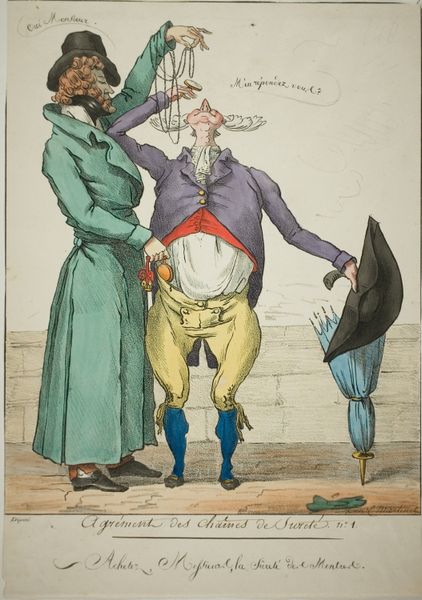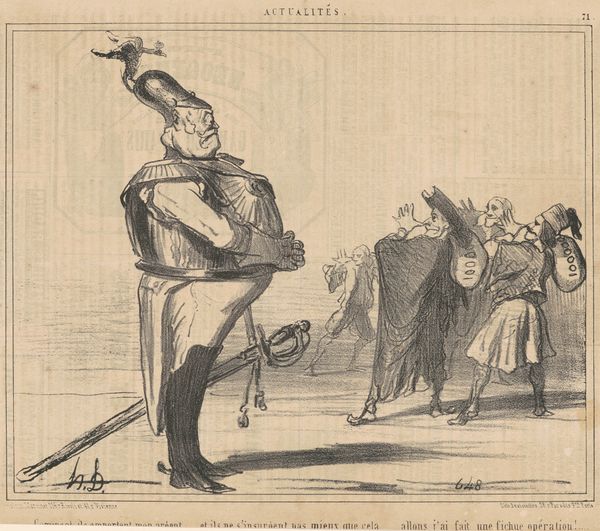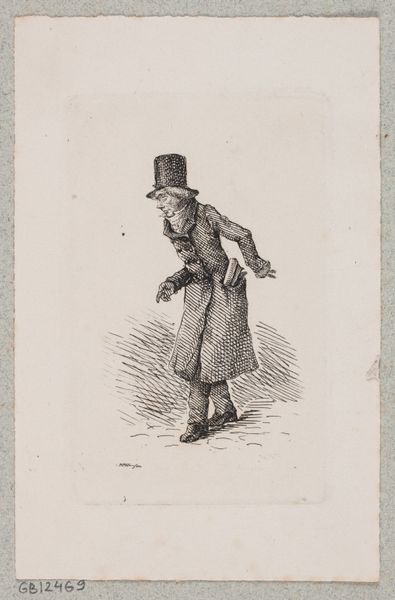
drawing, print
#
drawing
#
imaginative character sketch
#
aged paper
#
quirky sketch
# print
#
caricature
#
sketch book
#
personal sketchbook
#
romanticism
#
men
#
sketchbook drawing
#
watercolour illustration
#
genre-painting
#
storyboard and sketchbook work
#
cartoon carciture
#
sketchbook art
Dimensions: Plate: 9 7/16 x 7 3/8 in. (24 x 18.8 cm) Sheet: 10 5/8 x 8 1/2 in. (27 x 21.6 cm)
Copyright: Public Domain
Louis Maleuvre's "Le Nouvelliste Sans Argent," or "The Newsman Without Money" was made sometime in the late 18th or early 19th century, using etching and engraving techniques. These printmaking processes involve cutting lines into a metal plate, inking the plate, and then pressing it onto paper. This particular print is also hand-colored, adding another layer of detail. The linear quality of the etching gives the figures a crisp, satirical edge, while the added color enlivens the caricature. Look closely, and you can see the fine lines that define the figures' exaggerated features. Printmaking was a key medium for disseminating political and social commentary during this period. The relatively low cost of production meant that these images could reach a broad audience, making them a powerful tool for shaping public opinion. So next time you look at a print, remember that it's not just an image, but a product of specific technical processes, skilled labor, and social context. It challenges traditional distinctions between fine art and popular culture, highlighting the importance of making and materials in understanding an artwork's full meaning.
Comments
No comments
Be the first to comment and join the conversation on the ultimate creative platform.
